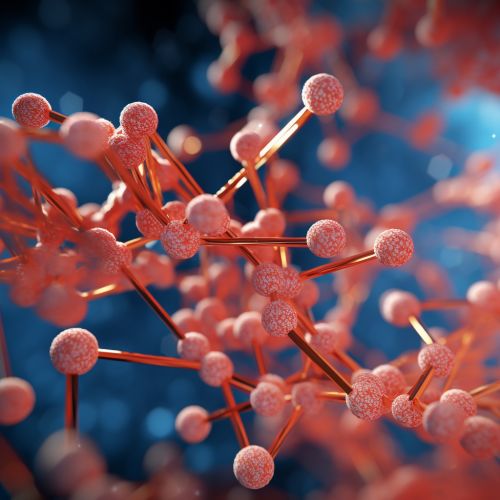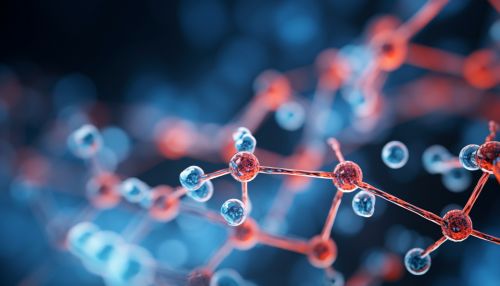RecA
Overview
RecA is a protein that plays a crucial role in the repair of DNA and the process of genetic recombination. It is a product of the RecA gene, which is found in most bacterial species and some archaeal species. The protein is highly conserved, meaning it has remained relatively unchanged throughout evolution, which indicates its fundamental importance to cellular function.


Structure and Function
The RecA protein is a DNA-binding protein that has the ability to bind both single-strand and double-strand DNA. It forms a helical filament around the DNA molecule, which is critical for its function in DNA repair and recombination. The protein's structure includes a central domain that binds to DNA, and two additional domains that are involved in ATP binding and hydrolysis.
The primary function of RecA is to mediate the process of homologous recombination, a type of genetic recombination that occurs between DNA sequences that are similar or identical. This process is crucial for the repair of DNA damage, particularly double-strand breaks, which can be lethal to the cell if not repaired. RecA also plays a role in the SOS response, a global response to DNA damage in which the cell cycle is arrested and DNA repair and mutagenesis are induced.
Homologous Recombination
In the process of homologous recombination, RecA binds to single-strand DNA at the site of a double-strand break. It then promotes the invasion of this single-strand DNA into a homologous double-strand DNA molecule, forming a structure known as a D-loop. This allows for the exchange of genetic information between the two DNA molecules, which can result in the repair of the double-strand break.
RecA also facilitates the formation of Holliday junctions, which are specific structures that form during homologous recombination. These junctions are points where two double-strand DNA molecules are connected, and they can be resolved in different ways to produce different genetic outcomes.
SOS Response
In addition to its role in homologous recombination, RecA is also involved in the SOS response to DNA damage. When DNA damage occurs, RecA binds to single-strand DNA and stimulates the autocleavage of the LexA repressor, leading to the derepression of the SOS regulon. This induces the expression of a number of genes involved in DNA repair and mutagenesis, allowing the cell to survive in the face of DNA damage.
Significance and Applications
Due to its fundamental role in DNA repair and recombination, RecA is of great interest in the field of molecular biology. It is a model system for studying the mechanisms of homologous recombination and the SOS response, and it has been the subject of extensive research.
In addition, RecA has potential applications in biotechnology and medicine. For example, it could be used to engineer specific genetic changes in bacteria, or to develop new strategies for treating diseases that involve DNA damage, such as cancer.
